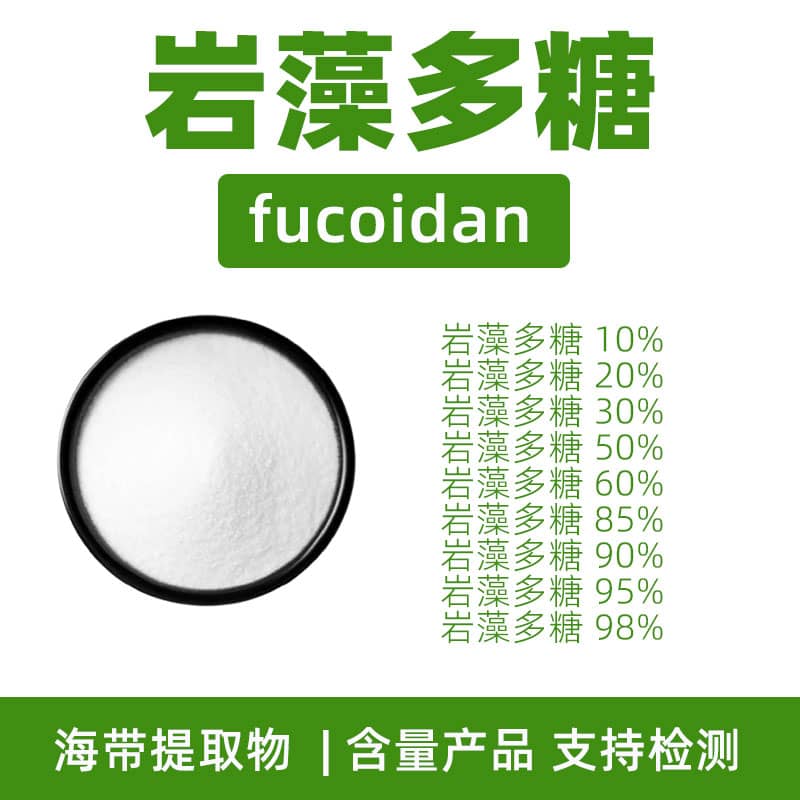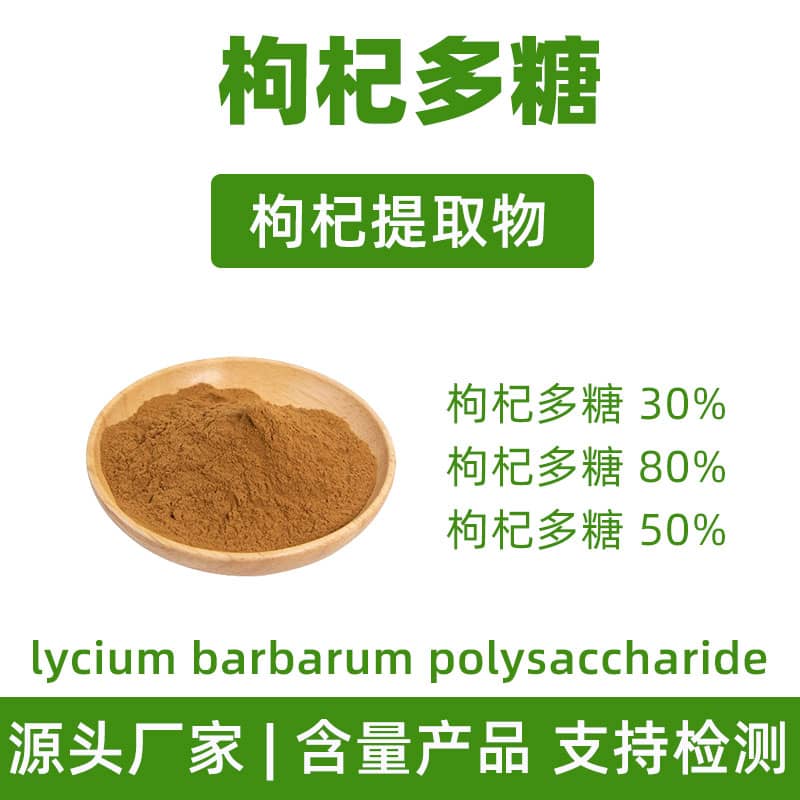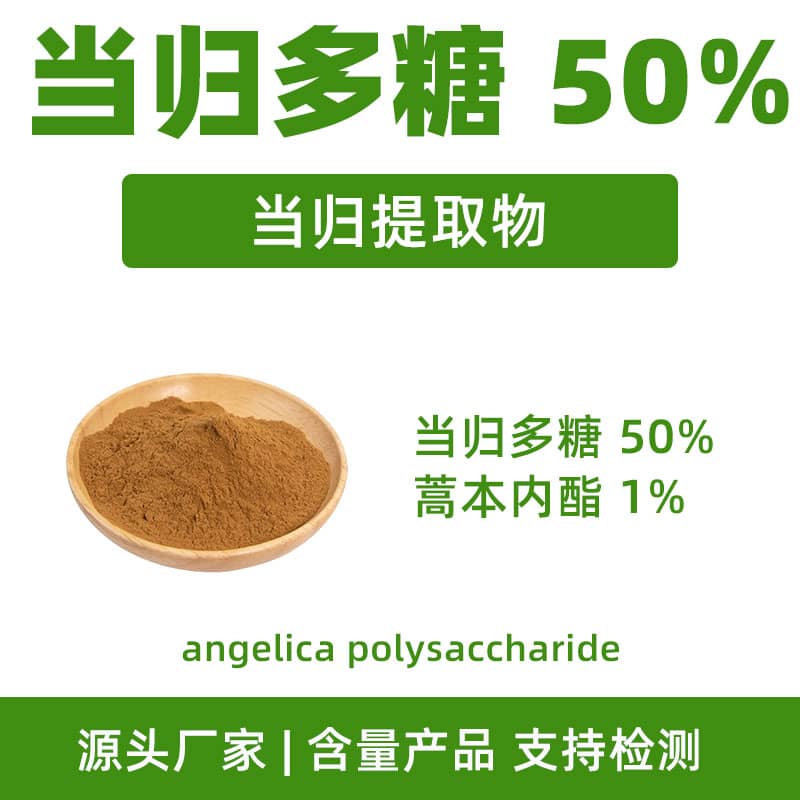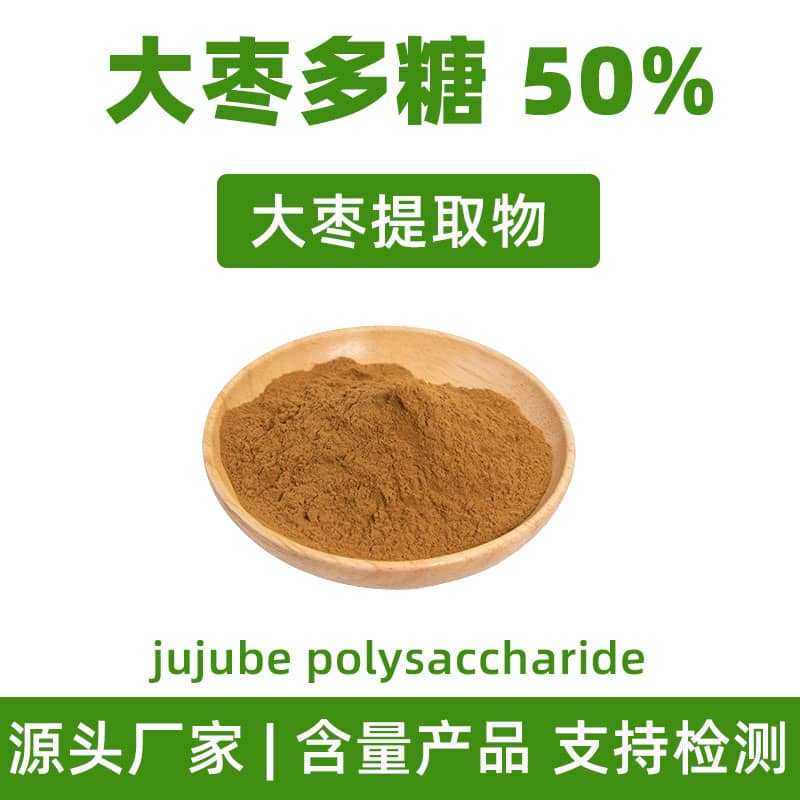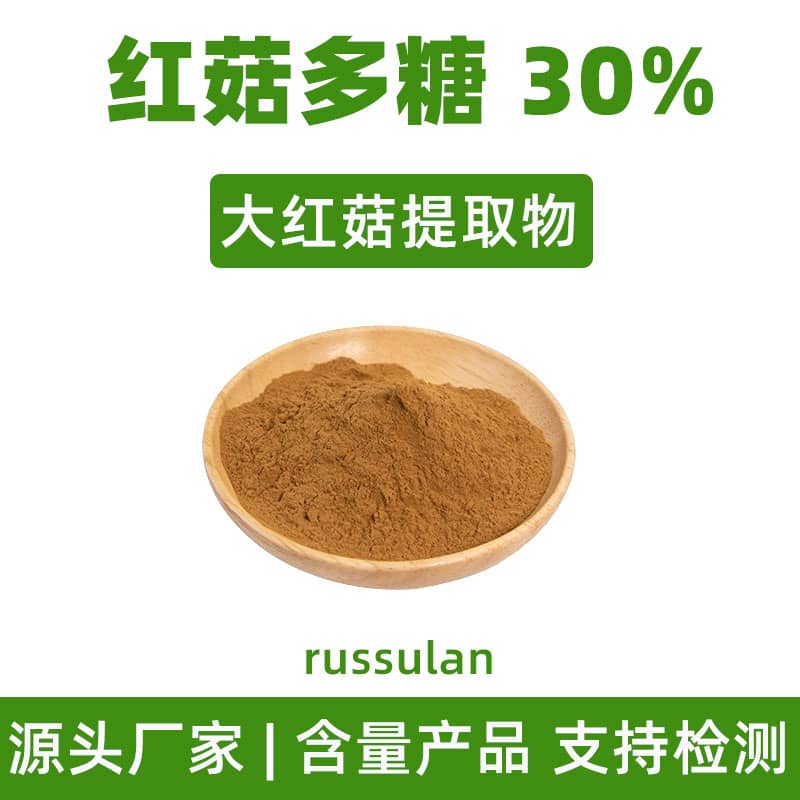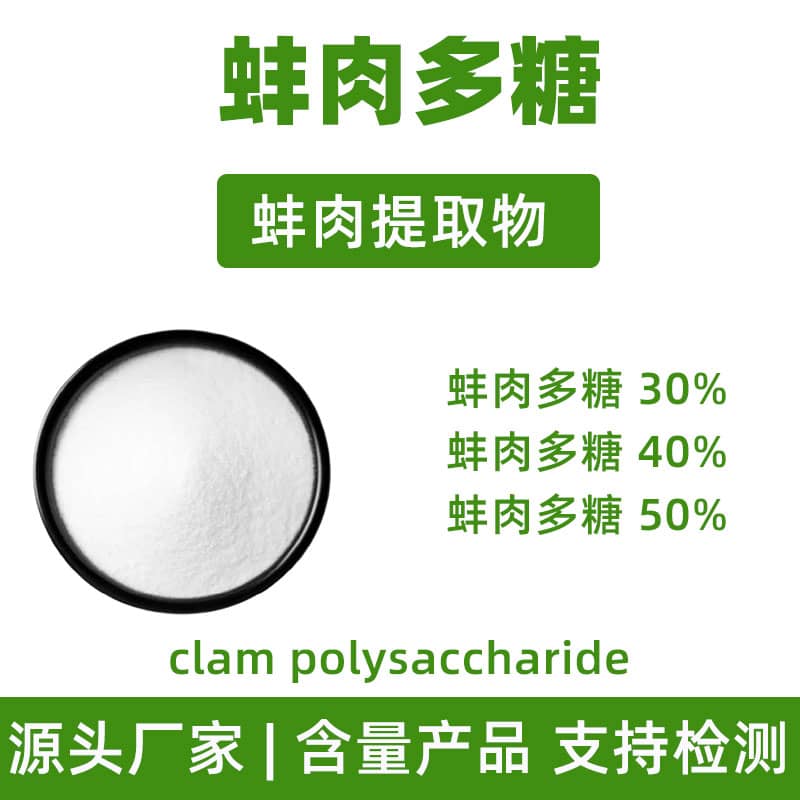Introduction to Chaga Mushroom Polysaccharide Products
Chaga mushroom polysaccharide is a type of polysaccharide extracted from the chaga mushroom (Inonotus obliquus), with chaga mushroom polysaccharide as its main ingredient, accounting for no less than 30%. Chaga mushroom polysaccharide is a natural active ingredient that has received widespread attention due to its unique chemical structure and biological activity. This product appears as a light yellow to light brown powder that is soluble in water and suitable for various fields.
In health food, chaga mushroom polysaccharide is widely used for its potential immune regulatory effects, often used in functional foods and beverages to enhance the added value of the product. In addition, this ingredient also has certain applications in the cosmetics industry, because of its moisturizing and antioxidant properties, it is used in skincare formulations.
Chaga mushroom polysaccharide products have a wide range of applications, and their active ingredients help products gain competitiveness in the market.
Chaga Mushroom Polysaccharide Product Production Process
The production process of chaga mushroom polysaccharide is a complex and delicate process aimed at maximizing the retention of active ingredients in chaga mushrooms. First, high-quality chaga mushroom fruiting bodies are collected, cleaned, and dried to remove impurities and moisture. The dried chaga mushrooms are ground into fine powder to increase the surface area, thereby improving the efficiency of subsequent extraction steps.
Next, the chaga mushroom powder is extracted with hot water. By controlling the temperature, time, and solvent ratio, the full dissolution of polysaccharides is ensured. The extract is filtered to remove insoluble impurities, and then concentrated to further reduce the volume of the liquid and increase the concentration of polysaccharides.
The concentrated extract is usually separated by ethanol precipitation. Ethanol is slowly added to the extract, stirred evenly, and left standing to precipitate the polysaccharides. The precipitated polysaccharides are separated and the remaining solvents and impurities are removed by centrifugation or vacuum filtration.
Finally, the obtained polysaccharide precipitate is vacuum-dried into a stable powder form. The dried polysaccharide powder is then screened to ensure uniform particle size and ultimately obtain chaga mushroom polysaccharide products that meet the standards. The entire process strictly controls temperature, humidity, and hygiene conditions to ensure product purity and quality.
Efficacy and Side Effects of Chaga Mushroom Polysaccharide
Chaga mushroom polysaccharide is a functional component extracted from the chaga mushroom (Inonotus obliquus), which is widely used in the fields of food, health products, and cosmetics. Chaga mushroom polysaccharide is mainly composed of β-glucan and other complex polysaccharides, which are considered to have multiple effects on the human body.
Firstly, chaga mushroom polysaccharide has antioxidant effects. It can help neutralize free radicals in the body, reduce oxidative stress damage to cells, and thus delay the aging process. In terms of antioxidants, chaga mushroom polysaccharide is often used in health products as a natural anti-aging ingredient. In addition, it is also used in cosmetics to help improve the skin's antioxidant capacity and improve skin condition.
Secondly, chaga mushroom polysaccharide also has the effect of enhancing immunity. Polysaccharide substances are generally considered to be able to stimulate the activity of the immune system, promote the production and function of white blood cells, and thus improve the body's immune response. This characteristic makes chaga mushroom polysaccharide an important component of many health products, used to support and maintain immune health.
In terms of anti-fatigue, chaga mushroom polysaccharide also shows certain effects. By improving the body's antioxidant status and enhancing immune function, chaga mushroom polysaccharide may help relieve physical discomfort caused by stress or fatigue, and improve overall energy and physical fitness. This makes it popular in various supplements, especially for people who need to maintain a high energy state.
However, the side effects of chaga mushroom polysaccharide are relatively rare, but it should be noted that individual sensitive to fungal components may have allergic reactions. Therefore, when using products containing chaga mushroom polysaccharide for the first time, it is recommended to start with a small dose and observe the body's reaction. In addition, pregnant women, nursing mothers, and people taking other medications should consult professionals before use to ensure safety.
In general, chaga mushroom polysaccharide, as a natural functional component, has broad application prospects. Its antioxidant, immune enhancement, and anti-fatigue effects make it valuable in multiple fields. However, when using it, attention should be paid to individual differences and possible side effects to ensure its safety and effectiveness.
Application Scenarios and Dosage of Chaga Mushroom Polysaccharide
Chaga mushroom polysaccharide is a polysaccharide extract derived from chaga mushrooms (Inonotus obliquus), which is widely used in various fields due to its various potential health benefits. The main application scenarios include the medical, food, and cosmetics fields. According to different needs and purposes, the usage and dosage of chaga mushroom polysaccharide are different.
Medical Field
In the medical field, chaga mushroom polysaccharide has received attention for its immune regulation and antioxidant properties. Chaga mushroom polysaccharide has been included in various dietary supplements to support the immune system and help the human body cope with various stressors in the external environment. In terms of specific use, the recommended daily intake is usually 250-500 mg, depending on individual health status and needs. When taking it, you can choose capsules, tablets, or powder forms, usually taken with warm water after meals, which can better promote absorption. Although chaga mushroom polysaccharide is generally considered safe, professional physicians' advice should still be followed in medical applications, especially when used for a long time or in combination with other drugs, to avoid possible interactions.
Food Field
In the food field, chaga mushroom polysaccharide is often used as a functional food ingredient to enhance the health attributes of food. It can be added to various beverages, cereal products, energy bars, and nutritional supplements to enhance the product's antioxidant capacity and immune support functions. For daily dietary supplements, the recommended dosage of chaga mushroom polysaccharide is 100-300 mg per day, which can be ingested by directly adding it to food or making beverages. In this case, chaga mushroom polysaccharide not only helps to enhance the nutritional value of the daily diet but also provides consumers with a convenient way to enjoy its health benefits.
Cosmetic Field
In the cosmetics field, chaga mushroom polysaccharide is widely used in skincare products due to its antioxidant and moisturizing properties, especially in anti-aging and repair products. It can help the skin resist free radicals in the environment, reduce oxidative damage, and delay the aging process. In addition, chaga mushroom polysaccharide also has good moisturizing properties, which can lock in skin moisture and improve the skin's luster and texture. Common application forms include essence, cream, mask, etc., with an addition ratio of usually 0.5%-2%. It is recommended to use it once in the morning and evening to achieve the best effect. Due to its natural origin and mild nature, chaga mushroom polysaccharide is suitable for all skin types, including sensitive skin.
Precautions for Usage and Dosage
When using chaga mushroom polysaccharide, in addition to following the recommended usage and dosage, the following points should also be noted. First, first-time users should start with a low dose and gradually increase to the recommended dosage to ensure adaptability. Secondly, if any discomfort occurs during use, stop using it immediately and consult a professional. Finally, for pregnant women, nursing mothers, and children, it is recommended to consult a doctor before use to ensure safety.
As a multifunctional natural ingredient, chaga mushroom polysaccharide has broad application prospects in the medical, food, and cosmetics fields. Through scientific and reasonable use, it can help consumers obtain more health benefits in daily life and also provide richer functional support for related products.
Introduction, Distribution, and Growth Environment of Chaga Mushroom Source Plants
Chaga mushroom (Inonotus obliquus) is a precious medicinal fungus that mainly grows in the cold northern hemisphere, especially in areas between 40°N and 60°N latitude. Chaga mushroom polysaccharide extract is derived from this unique fungus, and the efficacy of its components is closely related to its growth environment.
Plant Introduction
Chaga mushroom belongs to the phylum Basidiomycota, class Agaricomycetes, order Polyporales, and family Hymenochaetaceae. It often parasitizes on birch trees (Betula spp.), using the bark and trunk of birch trees as growth carriers. Chaga mushroom appears as irregular block shapes, with a rough and black-brown appearance similar to charred wood, while the interior is brownish-yellow. Chaga mushrooms grow slowly and usually take 5 to 10 years to develop completely and form fruiting bodies with medicinal value. The fruiting body of this fungus is mainly composed of mycelium, which contains rich polysaccharides, triterpenoids, flavonoids, and other active ingredients.
Distribution
Chaga mushrooms are mainly distributed in cold regions of the northern hemisphere, including Siberia, Finland, Poland, Canada, northern Japan, northeastern China, and the Korean Peninsula. In these areas, birch trees are widely distributed, providing rich habitats for the growth of chaga mushrooms. Due to the specific requirements of chaga mushrooms for growth environments, their natural distribution range is relatively limited. This also leads to the relative scarcity of wild chaga mushroom resources, and high-quality chaga mushroom products are usually expensive on the market.
Growth Environment
Chaga mushrooms prefer to grow in cold climatic conditions, especially in environments with low temperatures and moderate humidity. This fungus usually develops most vigorously in winter because low temperatures help its fruiting bodies grow and accumulate nutrients. Chaga mushrooms often grow in high mountain forests with higher altitudes, usually parasitizing on old, healthy birch trees without pests and diseases. Birch trees provide rich nutritional sources for their growth and development, especially sugars, phenols, and other substances in birch sap, which promote the growth and development of chaga mushrooms.
The growth process of chaga mushrooms is highly dependent on their environment. In addition to climatic factors, soil texture, pH value, and moisture content also affect their growth quality. Usually, chaga mushrooms prefer to grow in fertile, well-drained areas and have strong adaptability to acidic soils. The canopy structure and vegetation coverage of birch forests also affect the growth of chaga mushrooms. Moderate sunlight and gentle wind speeds help them mature.
The life cycle of chaga mushrooms is relatively long, and due to their parasitic characteristics, once they grow on a birch tree, they will parasitize and absorb nutrients from the tree for a long time, causing the birch tree to gradually die. Therefore, chaga mushrooms are usually picked after they are fully mature to obtain the best nutritional value.
Summary
Due to its unique growth environment and long growth cycle, chaga mushrooms make their extracts - chaga mushroom polysaccharide 30% have special value. It is precisely because this fungus depends on cold climates, birch tree hosts, and specific soil conditions that chaga mushrooms become a rare natural resource. Understanding the ecological characteristics and growth conditions of its source plants is of great significance for ensuring the quality and stability of active ingredients of extracts.
Processing and Storage of Chaga Mushroom Polysaccharide
The processing of chaga mushroom polysaccharide usually adopts modern extraction processes, such as hot water extraction, alcohol precipitation, and centrifugal separation to obtain polysaccharides. The processing process needs to strictly control temperature and time to ensure that the activity of polysaccharides is not damaged. The extracted product needs to be spray-dried or freeze-dried to ensure its stability and long-term preservation. When storing chaga mushroom polysaccharide, it should be kept in a cool, dry, and light-avoiding environment, sealed and stored, to avoid moisture and oxidation, and can usually maintain its quality stability for up to two years at room temperature.
Monica Sun is a seasoned expert in the plant extraction industry with over a decade of experience in research and production. She specializes in the extraction and purification of plant active ingredients, focusing on driving innovation in natural product applications. Monica has participated in the development of multiple functional plant extracts, delivering high-value natural raw material solutions for the health food, pharmaceutical, and dietary supplement sectors.









